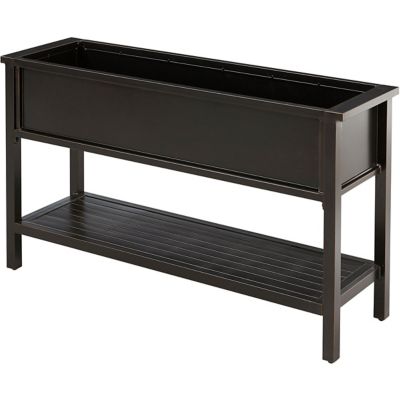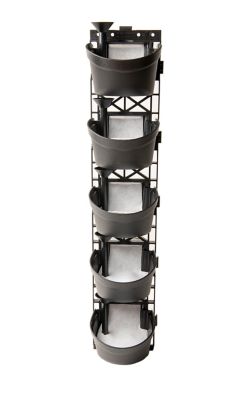Planning out a homesteading garden? There are lots of different methods of gardening out there that you might consider as your homestead garden.

This post contains affiliate links. As an Amazon Associate, I earn from qualifying purchases.
Planning out your homesteading garden truly can be one of the most exciting parts of gardening. For it is here that you can dream, wish, and imagine. Garden planning is a time of hope, excitement, and possibility- it really is a fun adventure!
But it can also be a little overwhelming. How does one start their homesteading garden? What should it look like? Should one method be preferred over others? In this post, we’ll dive into some different types of homesteading gardens so that you can decide how you’d like to grow your food. You might stick with one method or you may decide to try out different parts of all of these garden styles in your own garden. In our own experience, we’ve experimented with many different gardening styles and have learned a lot along the way. Just know that whatever you choose will be great- even if only for the fact that you might learn something useful. Don’t be surprised to learn, change, and try again year after year.
This post contains affiliate links. As an Amazon Associate, I earn from qualifying purchases.
Table of Contents
- Permaculture Gardens
- No Dig Gardening
- Raised Beds
- Companion Planting
- Traditional Homesteading Gardens
- Container Homesteading Garden for Those without Homesteads
- Final Thoughts
- Save this Post
- More on Gardening
Permaculture Gardens
Permaculture gardens are great homesteading gardens because of the big picture outlook this type of gardening style has. A permaculture garden is a permanent, evolving garden that is based on flourishing and successful ecosystems that naturally occur. Think of a permaculture garden as one that gives plants an opportunity to grow as they would in the natural world by working with nature instead of against it.
Now technically, some of the other methods we’re going to talk about (like Back to Eden, Ruth Stout, companion planting, and Hugelkultur) all fall under the permaculture umbrella. They focus on mimicking natural occurrences, like mulch and decaying organic matter, in order to successfully grow crops.
However, if we think about permaculture as a permanent homesteading garden, we might look at some of our permanent plants as some of our main inhabitants. Let’s dive into what a permaculture garden could look like as a homesteading garden.
Permaculture Examples
One of our favorite movies, The Biggest Little Farm, showcases a prime example of a permaculture farm. In this (true) movie, John and his wife Molly work to bring renewed life to their abandoned farm by stepping back, watching nature, and implementing it to their own homesteading garden.
Everything on their farm had purpose and reason. The animals provided fertilizer for the crops. Cover crops provided nutrients and protection for the soil. Recognize that predators coming into the area are helping to keep the natural balance of animals. When any problems arose in their garden, they always asked the question: How does nature deal with these problems?
One quick example is their fruit trees. The couple had thousands of fruit trees, all of them being destroyed by birds and snails. When they stepped back to think about what nature does in situations where the balance is off, they recognized predators were needed. Ducks were brought in to eat the snails and owl houses built to encourage owls to come and hunt the birds. The philosophy here of a permaculture garden is that everything is connected and must be balanced in order to be successful.
Practical Permaculture On Your Homestead
I really, really suggest you watch the movie The Biggest Little Farm for practical inspiration. I think that watching this movie was one of the main motivators to help us realize that this lifestyle could work.
Other ways to consider trying permaculture for your homesteading garden is with fruit trees and nut trees. Plant cover crops around your fruit trees that will provide nutrients to the soil, such as white clover, comfrey, or nasturtiums. To keep pests away, consider planting things like garlic and bee balm surrounding the tree. Bee balm, also, will help attract pollinators, which you definitely want near your fruit trees. Everything must be balanced and considered based on nature.
No Dig Gardening
No dig gardening is exactly as it states: gardening without digging up the earth. Many homesteading gardeners love the idea of a no dig garden because of the benefits it has for the soil. As you probably know, soil is filled with billions and billions of microbes, all of which play a critical role in the soil’s overall health, and consequently, the plant’s overall health. When the soil is plowed or hoed, the natural ecosystem within the soil is destroyed. Using the no dig gardening methods creates a healthy ecosystem that provides plants with what they need without needing to add extra fertilizers.
Of course, no dig gardening means that you have to be a bit more innovative and thoughtful when it comes to planting your crops. Pulling back the soil in the middle of your yard or an old field to plant a crop is going to be really difficult. Secondly, your plant more than likely will also get drowned out by weeds. And so, different gardening methods have been developed to help no dig gardeners be successful. The Ruth Stout Method and the Back to Eden method are two different homesteading no dig garden styles you could consider trying.
Ruth Stout Method
Ruth Stout was an American author who came up with the idea of a “no-work” garden. Her books, released in the 1970s, detail her unique strategies of creating a homesteading garden that involves no tilling, no weeding, no watering, and no digging. Sounds pretty great, doesn’t it?!
In order to create a “no-work” garden as Stout calls it, you must mulch. Any organic mulch will do the job, which is to decay and feed the soil while preventing weed growth. In her book, Gardening Without Work, Stout suggests that you might consider leaves, saw dust, pine needles, straw, hay, hay bales, spoiled hay, pine needles, weeds, cardboard, wood chips, lawn clippings, or vegetable scraps as your mulch. She recommends that you mulch at least 8 inches deep to start to prevent weeds from making their way through.
You need at least twice as much [mulch] as you think.
Ruth Stout, Gardening Without Work
The goal of the mulch, as mentioned before, is to prevent weeds from growing, keep moisture in the soil, and feed the soil as it decays. If weeds do happen to make their way through the mulch, you can simply cover them with mulch again. To plant using the Ruth Stout method, simply pull back the earth, drop your seeds in, and cover them back up with earth just as you would otherwise.
You can read more about Ruth Stout’s gardening methods in her books, which you can buy here.
Our Experience with the Ruth Stout Method
We’ve had some really great success growing potatoes with the Ruth Stout Method. To plant, we put our potatoes right on top of the soil and then covered them with a thick layer of spoiled hay. As the potato plants started to grow taller and it would have been time to hill them in a traditional garden, we added more spoiled hay. In the end, our potatoes were big, healthy, and pretty much weed free.
There are some downfalls to this method of gardening, though. When we had the thick mulch in the garden, we also had a huge population of voles and grass snakes. The voles loved to steal bites of our potatoes and the snakes loved to scare me half to death as I was walking. In the end, though, the potatoes were well worth it and our crop was successful despite the voles. This is the method we will use again and again when it comes to growing potatoes!
Back to Eden
The Back to Eden homesteading garden strategy is another one based around mulch. With this no dig method, gardeners layer fresh woodchips every couple of years to their gardens which combat weeds while breaking down to feed the soil. Also like the Ruth Stout method, this homesteading garden strategy boasts in its ability to keep the gardener from needing to weed or water while producing a bountiful harvest.
To create a Back to Eden garden, you can first lay down newspaper on the ground, though this is optional. The next step is to cover that with an organic compost, at least 3-5 inches deep. On top of the compost, you should add a layer that is 4-6 inches deep of wood chips. Then, you plant! Simply pull away some of the wood chips to plant your crop and allow nature to do its thing. The woodchips will slowly break down, feeding the soil. At the same time, the woodchips will also keep moisture locked into the soil and will keep weeds from growing to compete with your plants. It’s a great set-up!
Considerations for Back to Eden
The biggest consideration for the Back to Eden gardening method is where you will get your woodchips. One idea is to talk to electric companies who go through and trim trees each year to ask if you can get some of their woodchips. They *should* be free because the woodchips were cut from public ditches.
Another option would be to invest in a wood chipper of your own. They come in a variety of sizes and really aren’t that expensive compared to the investment you’d be making yearly for loads of woodchips.
Tractor Supply has a variety of sizes of wood chippers like this commercial sized one or this smaller wood chipper to consider for purchase.
Raised Beds
The raised bed is a really nice option for a homesteading garden, especially if you don’t have an already established garden area in place. The raised bed allows you to plant above the natural ground, adding in your own soil, compost, and weed deterrents. Many gardeners will build a wooden frame to create their raised beds, then add compost and/or soil, then plant their beds. Some will use woodchips or gravel as a pathway between the beds. This can be a really beautiful and organized gardening style, and it allows you to plant in whatever type of soil you prefer, rather than the soil of the land you’re working with (for example, clay, sand, or gravel).
Hügelkultur
The hügelkultur method of gardening is a gardening style of our ancestors. This permaculture, no dig, raised bed style involves placing woody materials on the ground, then covering them with compost and soil to create a raised bed to plant within. The woody materials then break down, providing nutrients to the soil. It’s a beautifully nature-mimicked way of growing that can be a great homesteading garden style.
Companion Planting
Companion planting is another great option for homesteading gardeners. In this style of gardening, certain plants are planted close together because of the benefits they offer to one another. You’ve probably heard of the three sisters gardening strategy first introduced by Native Americans. This is a prime example of companion planting. With the three sisters, corn is planted first to create a strong stalk for pole beans to grow up. The beans offer nutrients, specifically nitrogen, to the heavy feeding corn. Squash is then planted around the base of the corn, whose broad leaves offer shade for the soil, helping to inhibit weed growth.
There are many different companion planting guides, and it’s can get really interesting to see which plants to plant together and which plants to keep separate. I wrote a post here about different flower and vegetable combinations to plant try as companion planting options for homesteading gardens.
Our Experience with Companion Planting
We’ve done a number of different combinations of vegetable plants over the years, and we’ve had some noticeable success with some combinations and not a lot of noticeable success with others. Some successful combinations we’ve tried are green beans with corn, tomatoes with basil, carrots and radishes, and peppers with tomatoes. If you’ve had some successful combinations that you’ve tried, leave a comment down below!
Traditional Homesteading Gardens
The next homesteading garden style that some choose to use is the traditional homesteading garden. This would be the way that many of our pioneering ancestors would have used and the way that many continue to use today. With this style of gardening, the land is hoed or plowed, vegetables are planted separately in rows, and weeding must be done to keep the plants from being overcome.
Many pioneers would have planted their plants together based on fragrance and life cycle. The best smelling plants, such as herbs and flowers, would be planted near the home and windows for their fragrances. Other items were planted together based on when they’d be harvested. Things that were pulled and harvested continuously, such as lettuces and radishes, would be planted together while perennials would be planted together so that their roots would not be bothered.
Considerations for Traditional Gardening
Many gardeners today in my area grow this type of garden. It’s important to rotate crops in this type of garden as well as add fertilizers and amendments (like compost and manure) to the soil to keep it healthy.
Container Homesteading Garden for Those without Homesteads
For those out there who do not yet have a homestead, a homesteading garden is still a possibility for you! Many plants can be grown in containers very successfully. Some things to remember when planting in containers is to give you plant space for its roots to grow, provide drainage for the soil, provide adequate water, and use good quality soil.
Plants you might consider for a container homesteading garden may include:
- Tomatoes
- Strawberries
- Herbs
- Lettuces and Salad Greens
- Squashes
- Potatoes (yes! You just need to make sure you have a lot of soil and a big container)
- Peppers
- Cucumbers
If you’re looking to get started with container gardening, check out some of these products to help you get started:

This 10 gallon Coolaroo HDPE Fabric Grow Bag is made from high-density polyethylene kni… [More]

Relish gardening in small spaces with the Hanover Traditions 51 in. Raised Garden Bed P… [More]

Ever dreamed of having a Greenwall for your own home? Dream no more! AgroScis affordabl… [More]
Final Thoughts
There are a lot of different homesteading garden styles. Don’t be afraid to experiment with them and see which one fits your needs best. You might find that you really like growing some crops with one homesteading garden style and other crops a totally different way. Gardening is a constant learning game that always has room for growth (see what I did there?😎 ).
If you have a homesteading garden style that you prefer, tell us about it in the comments below!
Save this Post
Be sure to share and save this post on Pinterest.

More on Gardening
Looking for more on gardening? Check out some of these posts!
HOW TO LIVE IN HARMONY WITH NATURE ON A HOMESTEAD
DEER RESISTANT PERENNIAL FLOWERS FOR POLLINATORS
WHAT TO PLANT NOW IN JULY IN WISCONSIN FOR A FALL HARVEST
THIS IS WHAT AND HOW MUCH TO PLANT FOR A SELF-SUFFICIENT GARDEN THIS YEAR
EDIBLE NUT TREES FOR YOUR COLD-HARDY HOMESTEAD
VEGETABLE AND FLOWER COMBINATIONS TO TRY IN YOUR GARDEN THIS YEAR
BEST VEGETABLES TO DIRECT SOW IN ZONE 4
CHOOSING COLD HARDY TREES FOR YOUR SMALL HOMESTEAD ZONE 4 ORCHARD

Nasturtiums and cucumbers. Nasturtiums keep the cucumber beetles off. https://heirloomgrown.com/how-to-grow-the-best-heirloom-cucumbers
Thanks for sharing!